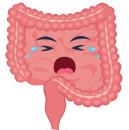This questionnaire will help you find out what your specific symptoms are and how your bowels have been working over the last week. We will ask you to complete this before and after the programme. It will help you, and us, see whether there has been any improvement in your symptoms and bowel habits.
This Self Help Guide gives you well researched information and advice on how to improve your symptoms, including information on diet, exercise, breathing and relaxation. If you would like a hard copy of this guide please email us at outpatientdietitians@waitematadhb.govt.nz.
(The password is in the invitation letter we sent you).
This explains what may cause a FGID and what symptoms are commonly seen. Advice on diet and non-diet approaches is provided.
You will need to follow the advice and strategies given here in Stage 1 for six to eight weeks. Many people find these strategies are all they need. If this is true for you, skip forward to Stage 4. However, if you are still finding it difficult to manage your symptoms after completing Stage 1, we suggest moving on to Stages 2 and 3 as well.
Resources






 gut-brain interaction (DGBI), constipation, reflux, diarrhoea, or irritable bowel syndrome (IBS).
gut-brain interaction (DGBI), constipation, reflux, diarrhoea, or irritable bowel syndrome (IBS).